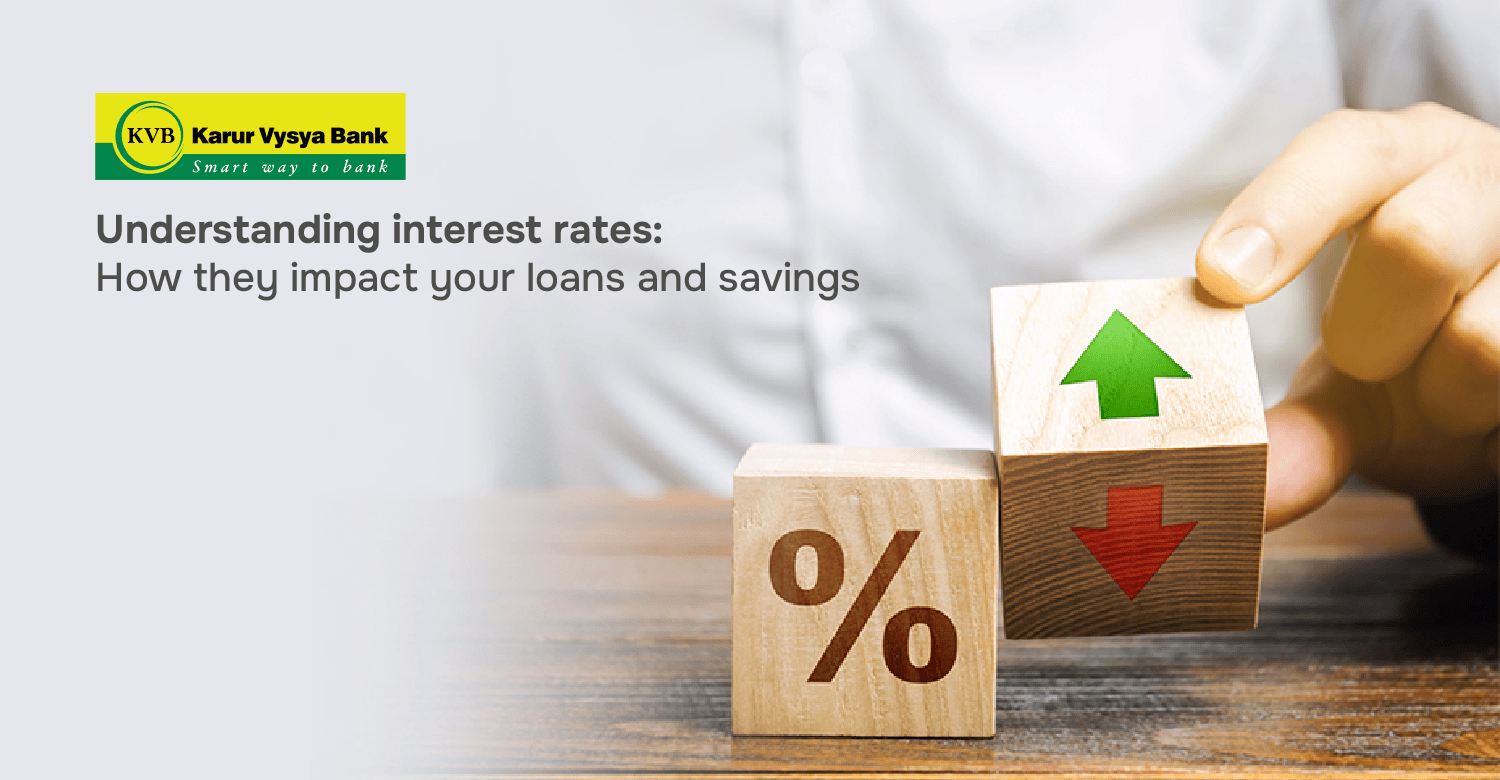Understanding interest rates: How they impact your loans and savings

Interest rates are a cornerstone of personal finance, significantly affecting both loans and savings. Whether you're borrowing money or saving it, understanding how interest rates work is essential to making informed financial decisions. This guide delves into how interest rates impact your finances and what you can do to navigate them wisely.
How Interest Rates Impact Loans
When you take out a loan, the interest rate represents the cost of borrowing money. It dictates how much you’ll pay over the loan term. Here’s how interest rates affect loans:
1. Personal Loan Interest Rates
Personal loans generally have either fixed or variable interest rates. A fixed-rate loan keeps your monthly payments steady throughout the loan term, offering predictability. A variable-rate loan, however, fluctuates with market conditions, which may lead to lower initial payments but a potential increase over time.
Opting for a fixed-rate loan can be a good idea when rates are expected to rise, as it ensures that you won’t end up paying more in the future.
2. The Influence of Economic Conditions
Interest rates vary based on broader economic conditions. Central banks, like the Reserve Bank of India, adjust the repo rate, which impacts borrowing rates across financial institutions. In times of economic growth, interest rates may rise to control inflation, making loans more expensive. When the economy slows down, rates often drop, making borrowing cheaper.
3. Total Loan Cost
The higher the interest rate, the more expensive the loan becomes. A 10% interest rate will significantly increase the total repayment amount compared to a 5% rate. This is why it’s crucial to compare rates across lenders before making a borrowing decision — even small percentage differences can save you a lot of money over time.
How Interest Rates Affect Savings
Just as interest rates influence the cost of loans, they also dictate how much you earn on your savings. Here’s how:
1. Savings Account Interest Rates
The interest rate on a savings account shows how much the bank pays you for keeping your money deposited. Higher rates lead to better returns on your savings, allowing your money to grow faster. Your savings can accumulate significantly in a high-rate environment, while lower rates slow down the growth.
2. Compound Interest
When it comes to savings, compound interest is your friend. Compound interest means you earn interest not just on your initial deposit but also on the interest that’s already accrued. The higher the rate, the more powerful the compounding effect. This is why it’s essential to choose savings accounts with favourable rates.
3. Tiered Interest Rates
Some banks offer tiered interest rates, meaning higher balances yield higher returns. If you can maintain a larger deposit, this could maximise your earnings. Shopping around for accounts that offer tiered structures can significantly boost your savings.
Pro Tip: Maximising the Benefits of Interest Rates
To make the most out of both borrowing and saving, you need to stay informed about current interest rate trends. For borrowers, locking in a low rate when possible can save you money in the long run. Savers, on the other hand, should look for high-interest savings accounts that allow their money to grow.
Interest rates play a pivotal role in managing both your loans and savings. By understanding how they work, you can make smarter financial decisions. At Karur Vysya Bank, we offer competitive rates on loans and savings accounts, helping you make the most of your finances.


